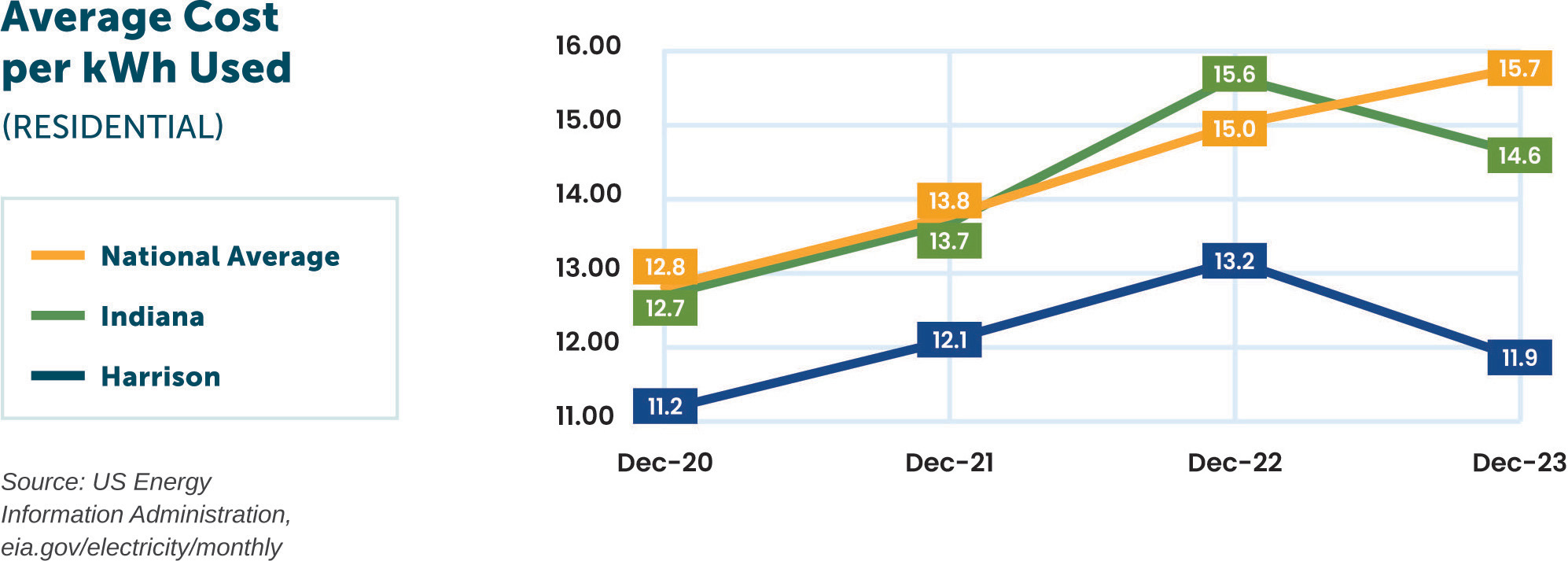
Although inflation has decreased from the 40-year high of 9.1% in 2022, it remains elevated historically speaking. From 2021 to 2024, inflation increased by 20.1% compared with only a 7.7% increase from 2017 to 2020. Inflation continues to apply upward pressure on everyone’s costs for groceries, rent, utilities, fuel, and many other household items.
Your cooperative has experienced many of these same upward cost pressures resulting from inflation, supply chain issues, labor shortages, and the increasing prices for natural gas and other fuel-related expenses. The “Rising Costs” of material in the electric pole graphic shown on page 7 highlights the recent price increases experienced by the REMC.
Due to the many factors stated above, electricity costs have risen in Indiana and across the United States. From December 2020 to December 2023, the average electricity price in Indiana has increased from 12.7 cents to 14.6 cents per kWh or 15%. While Harrison REMC isn’t immune to these same cost pressures, we have maintained relatively stable rates, with electric rates increasing from 11.2 cents to 11.9 cents or 6.3% during this time. As you can see from the chart below, your electric cooperative has rates lower than the Indiana and national average compared to all electric utility companies.
Harrison REMC’s local distribution rates last increased by 1.7% in November 2022. Since November 2017, our rates have increased by 4.9% or an average of .8% per year*. In May, we will increase all rate classes by 3% to help cover local distribution expenses. Part of this 3% increase will be achieved by increasing the basic service charge from $28 to $30 monthly.
Management and the REMC board continue to consider the needs and expectations of the membership (reliable service at a reasonable price) while ensuring a skilled workforce is equipped with the necessary tools to perform duties safely and efficiently. We appreciate your comments and suggestions throughout the year and will continue to work hard to minimize costs.

*Note: These local distribution rate increases do not include the monthly increases or decreases in member bills based on the fluctuating fuel costs that Hoosier Energy charges the REMC.


